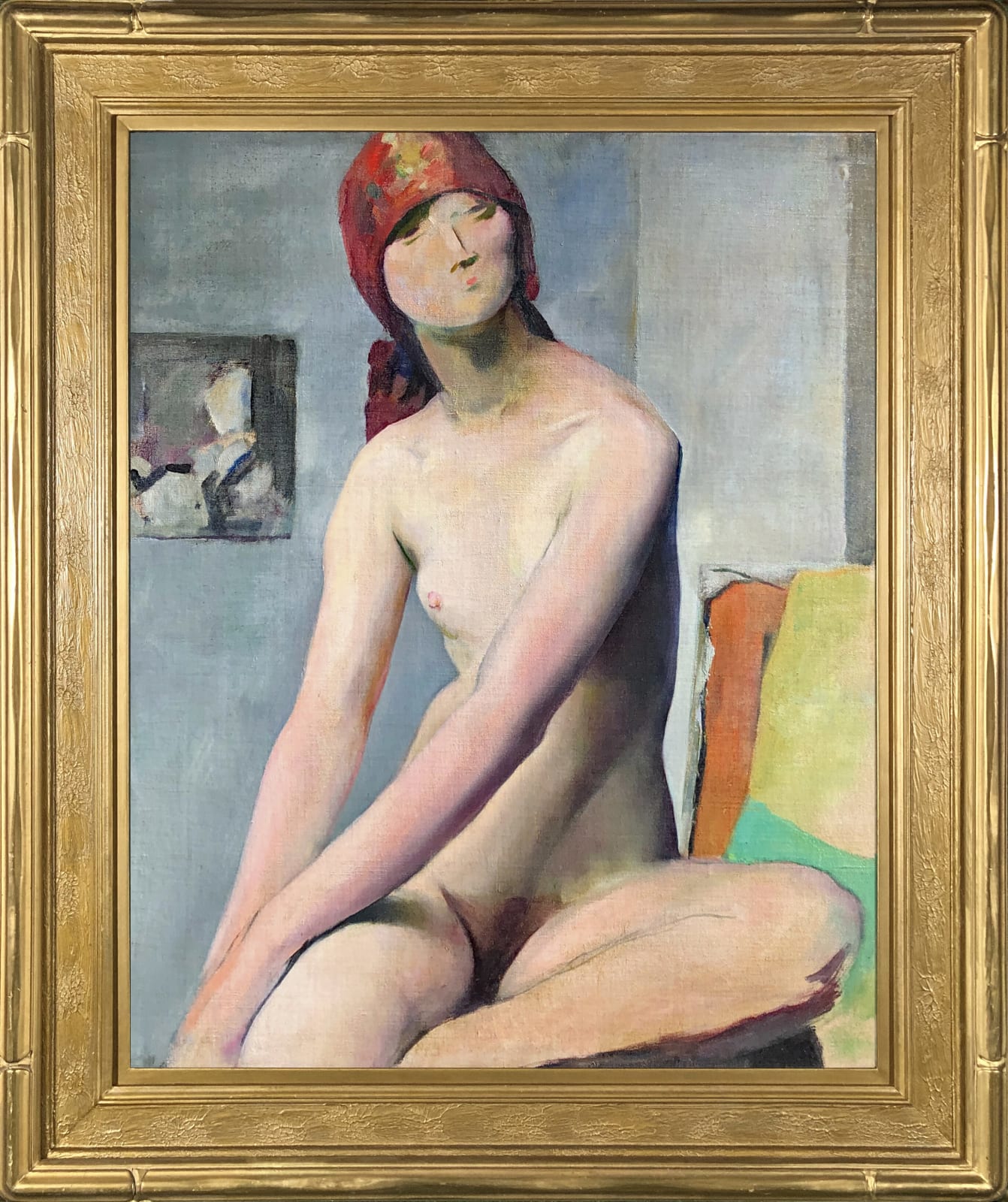Arthur B. Carles 1882-1952
Nude
Oil on canvas
30 x 24 inches
76.2 x 61 cm
Framed dimensions 37 1/4 x 31 1/4 inches
76.2 x 61 cm
Framed dimensions 37 1/4 x 31 1/4 inches
The Philadelphia modernist Arthur B. Carles was a brilliant colorist and an extraordinarily innovative painter. Though Carles trained initially at the Pennsylvania Academy of the Fine Arts, soaking up the...
The Philadelphia modernist Arthur B. Carles was a brilliant colorist and an extraordinarily innovative painter. Though Carles trained initially at the Pennsylvania Academy of the Fine Arts, soaking up the more conservative teaching of William Merritt Chase and Thomas Anshutz, he was deeply influenced by the avant-garde art scene in Paris during his first trip there in 1905. In 1907, Carles won the prestigious Cresson Traveling Scholarship, which enabled him to return to Paris for several more years. This experience had a profound impact on Carles as an artist; he was extremely affected by modern French painting, especially the work of Cezanne and Matisse, and by the time Carles returned home to Philadelphia in 1912, he was a confirmed modernist.
Carles revisited the subject of the female figure numerous times throughout his life, often using this form as a vehicle for his experimentations with pure color and abstraction. However, painting the nude was far more than just a formal exercise for Carles; he was highly sensitive to female beauty and was both deeply attracted to and attractive to women. He once joked that “Women are my medium.” Carles was also aware of the hint of scandal which surrounded this subject for the American public, and he may have enjoyed the degree of controversy that some of his paintings elicited.
After returning home to Philadelphia from France at the end of 1912, Carles began to explore the subject of the female figure extensively until around 1919. Although some of these works might have appeared daring by Philadelphia’s standards, many of them remained fairly academic despite a certain freedom of brushwork and color. These paintings were generally quite well received, and indeed Carles won a silver medal for Repose at the Panama-Pacific International Exposition in 1915. A critic for the Philadelphia Press remarked that the painting “aroused considerable comment, and showed an unusually fine color sense and a deliberate disregard for the conventional manner of painting.”
In the summer of 1921, Carles returned to France through the generosity of his friends and patrons, and during this period, he revisited the figure once again, executing a series of paintings through which he pushed further into abstraction. Carles noted that modern artists often worked in a series because it enabled them to move from a realistic depiction of their subject to a work that captured the spirit of the subject, and finally to an interpretation that encapsulated “the mood, abstract and entirely detached from the first painting.”
Carles revisited the subject of the female figure numerous times throughout his life, often using this form as a vehicle for his experimentations with pure color and abstraction. However, painting the nude was far more than just a formal exercise for Carles; he was highly sensitive to female beauty and was both deeply attracted to and attractive to women. He once joked that “Women are my medium.” Carles was also aware of the hint of scandal which surrounded this subject for the American public, and he may have enjoyed the degree of controversy that some of his paintings elicited.
After returning home to Philadelphia from France at the end of 1912, Carles began to explore the subject of the female figure extensively until around 1919. Although some of these works might have appeared daring by Philadelphia’s standards, many of them remained fairly academic despite a certain freedom of brushwork and color. These paintings were generally quite well received, and indeed Carles won a silver medal for Repose at the Panama-Pacific International Exposition in 1915. A critic for the Philadelphia Press remarked that the painting “aroused considerable comment, and showed an unusually fine color sense and a deliberate disregard for the conventional manner of painting.”
In the summer of 1921, Carles returned to France through the generosity of his friends and patrons, and during this period, he revisited the figure once again, executing a series of paintings through which he pushed further into abstraction. Carles noted that modern artists often worked in a series because it enabled them to move from a realistic depiction of their subject to a work that captured the spirit of the subject, and finally to an interpretation that encapsulated “the mood, abstract and entirely detached from the first painting.”
Provenance
The artist;Collection of Walter Stuempfig, Philadelphia;
Private collection, Massachusetts until 2022
Please join our mailing list
* denotes required fields
We will process the personal data you have supplied in accordance with our privacy policy (available on request). You can unsubscribe or change your preferences at any time by clicking the link in our emails.



